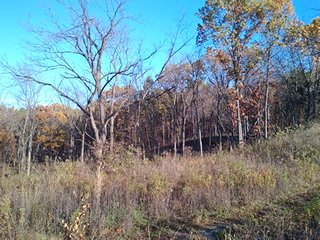
Five of us strap on 3-gallon backpacks filled with bright blue liquid, each with a hand pump, hose, wand, and spray nozzle attached. I feel like we’re a gang of Ghostbusters (and it’s even close to Halloween), but instead of driving into the heart of some haunted metropolis, we make our way on foot to Allen Hill, a wooded area north of the restored prairie here at Camp Friedenswald. We receive instructions on how to operate our packs and what we should watch for and douse, then spread out to cover the hillside.
We’re looking for shrubby invasives, and our packs contain an herbicide that will be more effective at permanently removing undesired plants than just cutting back the above-ground growth. The work being done this afternoon is only a fraction of a step in the long process toward restoring the area to a savanna habitat, one of the several distinctive and key ecosystems on Camp property. Previously, Camp staff and volunteers have worked in the area clearing trees, cutting back unwanted understory growth, applying herbicides, and burning or hauling out wood scrap. Future work will involve removal of additional trees, controlled burning of the area, and encouraging the natural growth of native sedges and grasses.
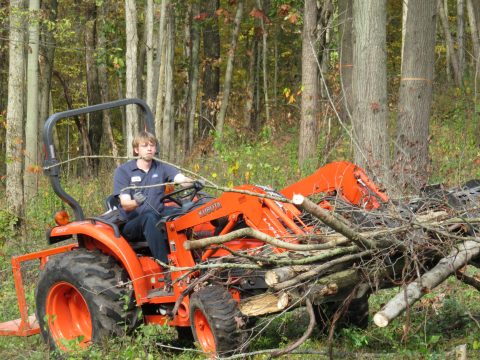
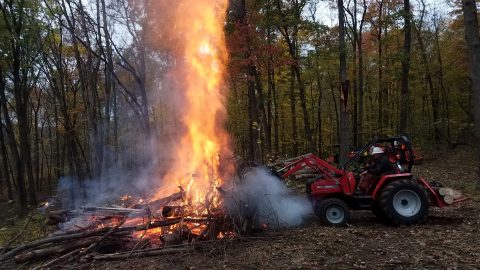
Why go to this trouble? Why cut down or otherwise kill trees, and set fire to the hillside? Some of you may already be familiar with the intensive efforts at Camp Friedenswald to restore a prairie ecosystem east of the tennis courts; the area targeted as savanna is linked with the prairie, and therefore requires similar maintenance practices. But why choose to convert woodland to savanna, or woodland to prairie, in the first place? Ecosystems are constantly changing and evolving, and one could argue that to use aggressive measures to return any given ecosystem to an earlier state is imposing on and interrupting a natural process. This question of how to conserve, preserve, and/or restore natural areas is at the heart of land management practices, and often elicits strong (sometimes conflicting) reactions.
Bruce Hull, in his book Infinite Nature, asserts that nature is so inclusive and boundless that any limited concept of what a natural area ought to be is incomplete and inaccurate. He further asserts that when we limit our ideas about how a natural area should function, we limit our ability to connect and communicate with each other — ultimately hindering our ability to come to an agreement and accomplish necessary work. According to Hull, when we view nature as infinite, we are forced “to accept our role in determining which natures exist” because we see that nature is all-encompassing, including humans and our actions; we therefore have no choice but to abandon arguments that are based on the idea that there is an ultimately natural state of any given area. So how do we make, and justify, land management decisions? By the same method that many of us learn at some point as kids in school, and that many of us use throughout life: gathering as much information as possible from multiple, respectable sources, then moving forward with hope for the best, and with humility that for most decisions there always exists an element of uncertainty.
Throughout the process of deciding how to be responsible stewards of the land Camp occupies and manages, staff have consulted with experts from the Department of Natural Resources, Michigan State University, Merry Lea Environmental Center, and elsewhere in order to determine best practices. Savannas naturally occur in various areas of the Midwest, and provide a uniquely diverse range of habitats, which in turn invites biodiversity. Additionally, official land survey maps depicting Cass County land use in the 1800s show savanna in the current restoration area. It’s also interesting to note that fire prevention has actually been detrimental to savanna habitat, as the native grasses become shaded out by shrubby growth that would otherwise burn in a prairie fire. At Camp, a savanna ecosystem will occupy a transitional space between the prairie and the woodland, and will provide the proper growing conditions for trees (primarily oak and walnut), grasses, and wildflowers that support the many birds, reptiles, mammals and insects that play a critical role in sustainable ecosystems.
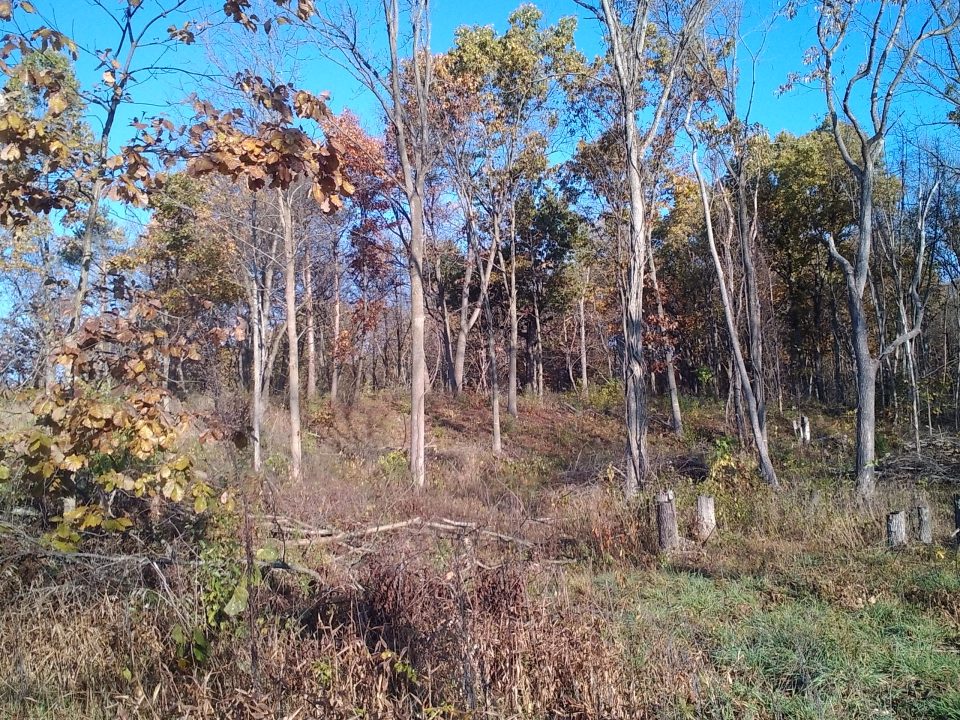
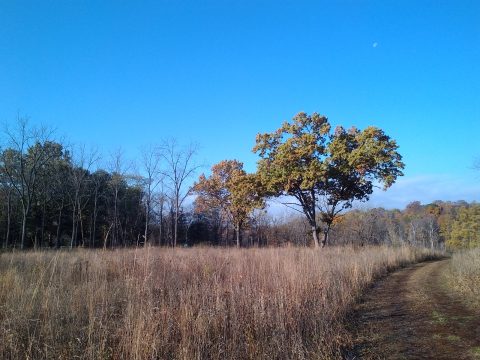
As we were working, one member of the crew exclaimed in excitement that she found a baby box turtle. The turtle was smaller than the size of an adult’s palm, the shell just beginning to show suggestions of the gorgeous yellow and orange markings that will develop over the next several years. Its beauty and preciousness elicited awe and admiration from all of us. Thinking that the herbicide we were spraying might be harmful to the turtle, she picked it up and moved it to a different area of the hill. Later, however, she wondered whether it would have been best simply to leave the turtle be, and if relocating it was disorienting. As stewards of the land we constantly face these decisions. Do we act? Do we limit our human influence? How do we arrive at the most responsible course of action? Being mindful of the fact that we inevitably impact our natural environment is a critical first step. Then, weighing options and possible outcomes, gathering information and considering who will benefit, we determine how to tip the scale past neutral, even, such that our impact hopefully does more good than harm.
Reference cited:
Hull, R. B. (2006). Infinite nature. Chicago, IL: The University of Chicago Press.